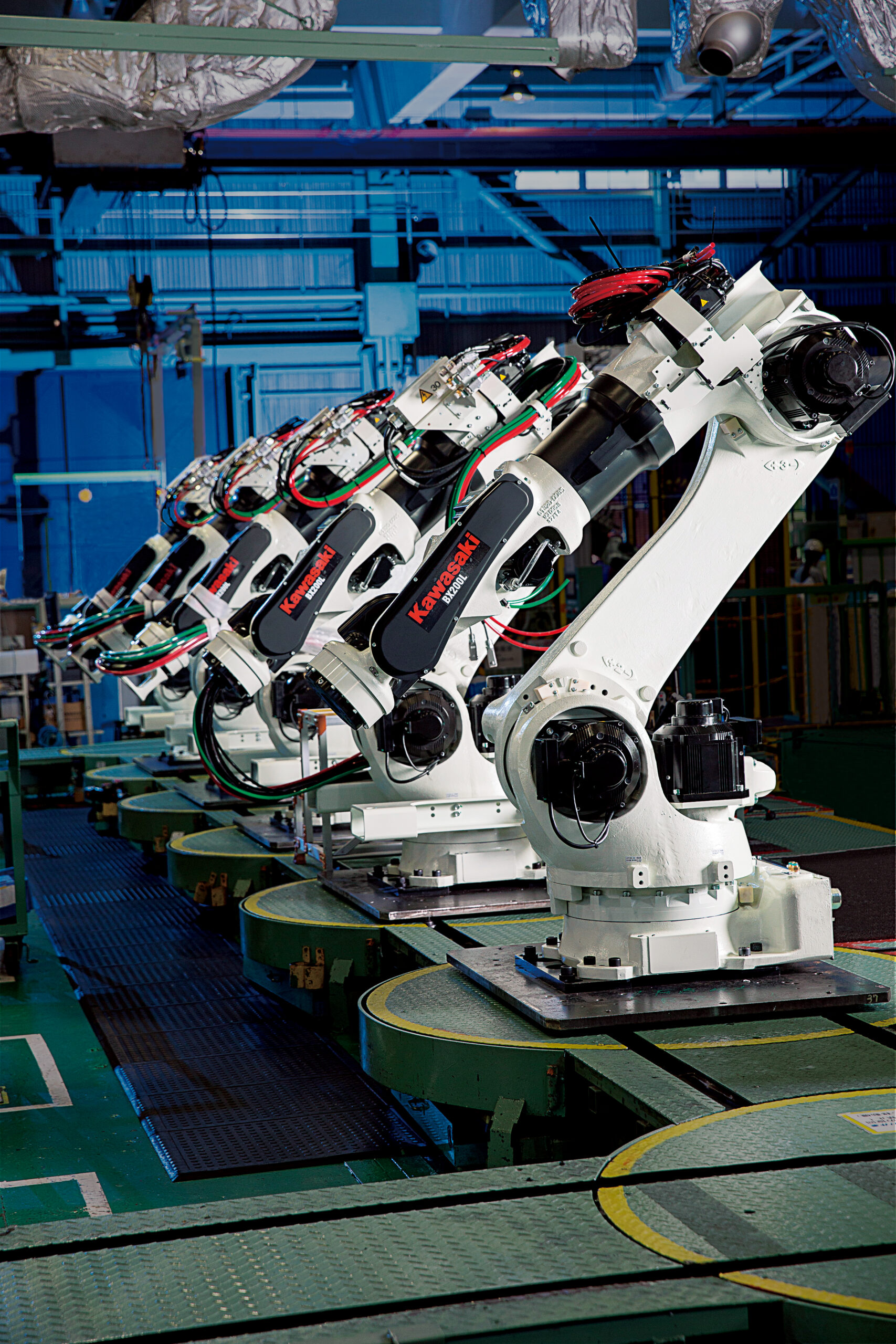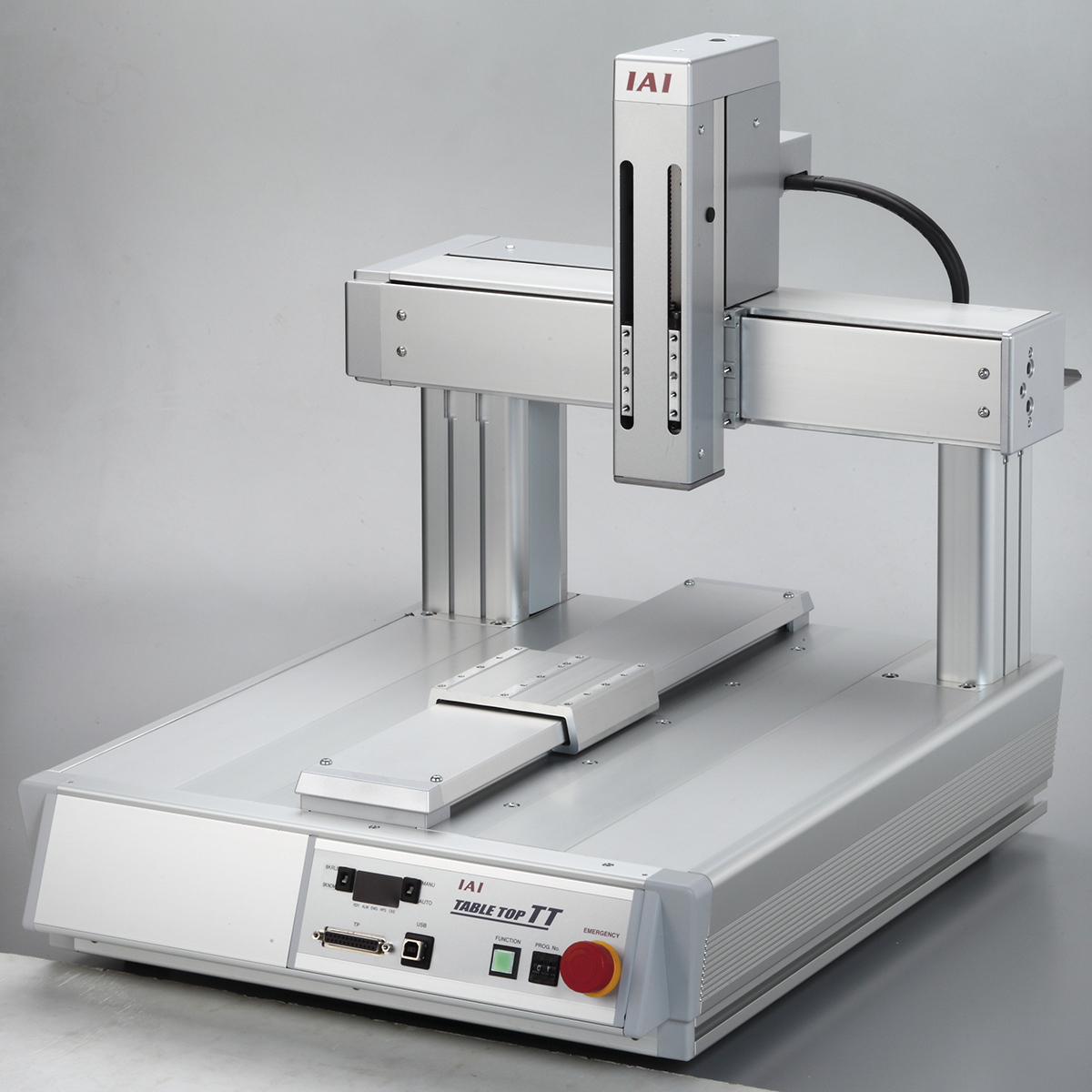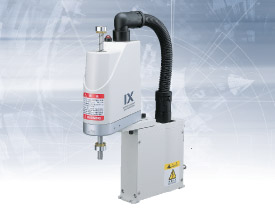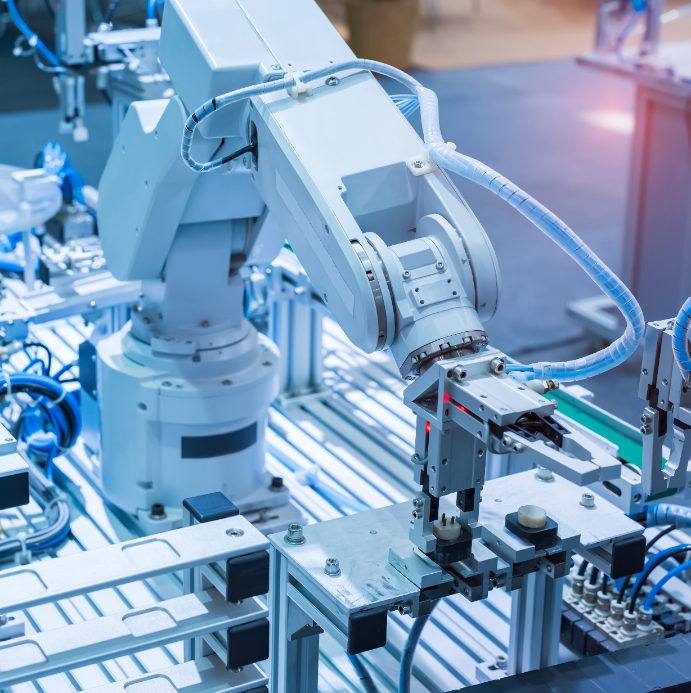Getting to Know Industrial Robots
As more manufacturers employ industrial robots to automate tasks, improve safety and enhance production and quality, there has been an increase in the availability of different types of robots, each designed to fit specific needs and tasks in a variety of industries. This article will explore the benefits of robotic automation, as well as the various types of robots, their advantages and the applications for which they are best suited.
The Benefits of Robotic Automation
Because industrial robots are designed and built for speed and accuracy, they can often complete tasks with more efficiency than human workers. Robots can work continuously without breaks and without becoming fatigued, further increasing productivity and output. Further, because robots automate the process, their use often alleviates bottlenecks on production and packaging lines. As a matter of fact, some statistics show that a 40% increase in the output of a production line becomes possible when replacing one employee with an industrial robot. The increased productivity/output often results in a quick return on investment.
Quality improvements are another benefit associated with industrial robots, as they provide higher levels of accuracy and more consistency, ensuring that products are always manufactured to the same specification. This repeatable accuracy reduces scrap and waste and ensures that product quality standards are met.
Since industrial robots can safely work in areas that are considered high-risk environments for humans, the integration of industrial robots often leads to a reduction in occupational hazards and can greatly improve the safety record of a facility. In addition to performing work in hazardous areas, robots can also assume tasks are known to cause repetitive motion injuries in human employees. This frees live workers to attend to less monotonous, value-added tasks while also avoiding motion-related injury.
Common Types of Industrial Robots
With such great potential for increased productivity, quality and safety, it’s no wonder more manufacturers are showing interest in applying robotic automation in their facilities; however, many are unsure about what type of robot is right for their application. Here, we outline the six most common types and discuss the specialties of each.

Articulated Robots
The mechanical movement and configuration of an articulated robot resembles that of a human arm. The arm is mounted to a base with a twisting joint and has anywhere from two to ten multiple rotary joints, which serve as axes and provide various degrees of motion. Because they offer flexibility, high speeds and take up little workspace, articulated robots are the most commonly used type and are often found in food packaging, welding, material handling, automotive assembly, steel cutting, machine tending and foundry and forging applications.
Collaborative robots, or cobots, are specifically designed for integration into workspaces that are shared with human co-workers. Close proximity to operators necessitates that they are built in a way that allows them to be safe, even if they cross paths with or bump into their human counterparts. Due to the inherent safety features, following a risk assessment study, cobots can usually be placed on the factory floor without cages or guarding, making their integration simpler and less costly than that of industrial robots. They find use in pick-and-place, palletizing, quality inspection and machine tending applications.

Collaborative Robots

Cartesian Robots
Cartesian robots feature three prismatic joints that deliver linear motion by sliding along the three perpendicular axes (X, Y and Z). Some Cartesian robots have an attached wrist that allows rotational movement. They provide positional accuracy, handle heavy loads, are simple to operate and easy to customize, making them popular in pick-and-place operations, loading and unloading, material handling and assembly applications. They are also commonly found in CNC machines and 3D printing.
SCARA (Selective Compliance Assembly Robot Arm) robots feature two parallel joints giving them the ability to provide lateral motion in one selected plane. The rotary shafts are positioned vertically and an end attachment on the arm moves horizontally. SCARA robots provide high speed and excellent repeatability, making them suitable for assembly, packaging, palletizing and machine loading applications. They are also found in semiconductor wafer handling and biomed applications.

SCARA

Delta Robots
Delta robots consist of parallel joint linkages connected to a base which is mounted above the workspace. They are capable of delicate and precise movement, as well as high speeds. Delta robots are often employed for rapid pick-and-place applications in the food, pharmaceutical and electronic industries, as well as in flight and automobile simulators and optical fiber alignment applications.
Polar robots feature an arm with two rotary joints and one linear joint, which are connected to a base with a twisting joint. These robots offer a spherical work zone with the central pivoting shaft and extendable rotating arm allowing them to sweep a large volume of space and reach all around, as well as above or below obstacles, while taking up less floor space. They are suitable for injection molding, material handling, stacking and unstacking, welding and die casting applications.

Polar Robots
Considerations for Robot Selection
While many robot types are available to fill a variety of positions, it’s important to evaluate the needs of the specific application when investing in robotic automation. To do so, experts recommend the following considerations:
- Reach and Payload: The total weight of the expected load, including any tooling or other accessories that will be at the end of the robot’s arm, must be less than the maximum load capacity of the robot to ensure the greatest accuracy.
- Speed and travel: The robot’s speed over the required distance is another important consideration, especially in pick-and-place applications. Typically speed and distance capabilities can be customized for an application.
- Environment: It’s important to consider whether the robot will be placed in an environment that is hot, dirty or dusty as the robot may require the addition of high-performance seals to protect the inner workings. It is also possible to customize robots for high-purity or cleanroom applications.
- Space and Footprint: Keep in mind that any potential workspace restrictions, such as a small envelope or obstacles, will impact where and how the robot can be mounted. If space is particularly limited, robots that are more vertically oriented, such as Cartesian and Delta robots, may be a good option.
- Maintenance Requirements: Like most industrial equipment, running a robot in a 24/7 operation will limit its lifespan compared to using a robot in a less intense application. Maintenance needs during the lifespan are also an important consideration. Once you’ve determined the robot type that best suits your application and meets your specifications, keep in mind that today’s industrial robots are easier than ever before to integrate into the facility. Most are easily programmable, able to be moved from one process to another and come equipped with intuitive software packages.
For more information on finding the right industrial robot for your automation needs, please contact a representative at JHFOSTER.
